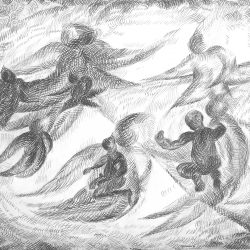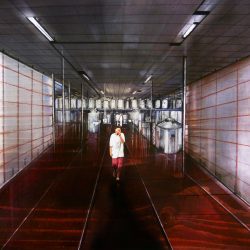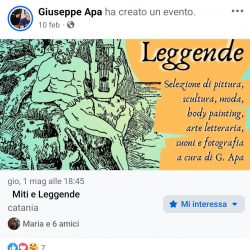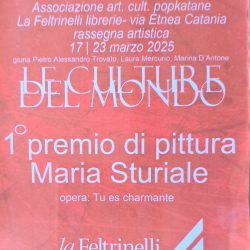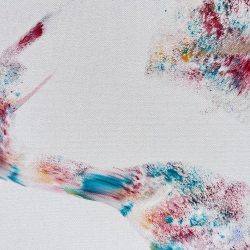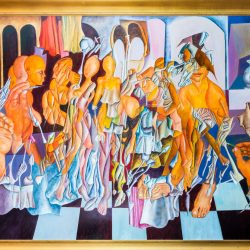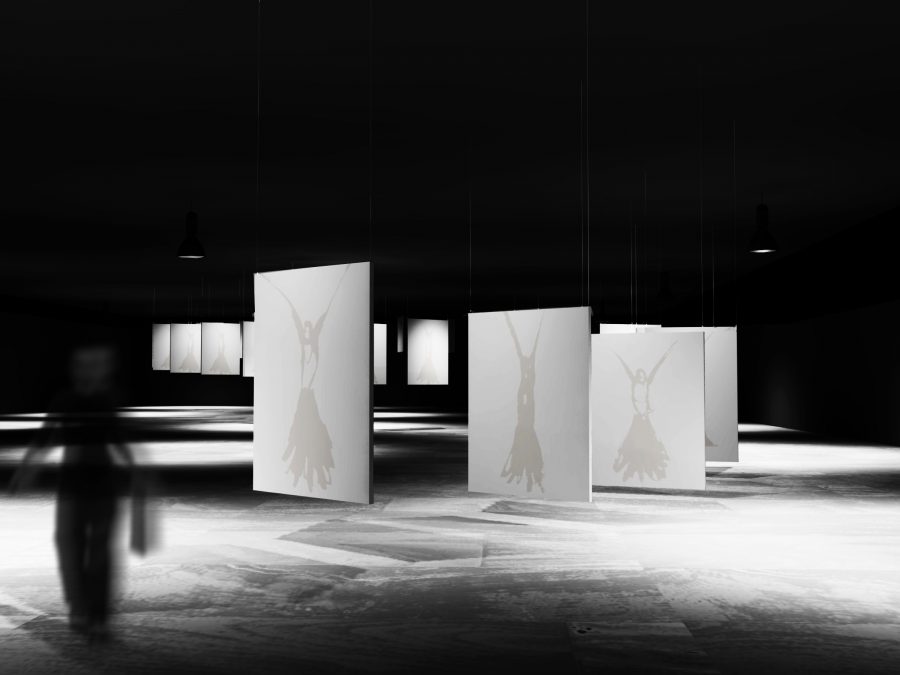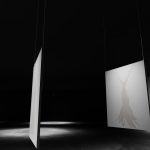COSMIC WHORE
We are constantly cloaked in passive imagination. The flow of images in our society is so pervasive that, in order to make room for ever-changing sensory appeals, it annihilates even our nearest remembrances. It is as if perceptively we regressed to an oral phase feeding ourselves, like Freud’s polymorphous perversity, by incessantly sucking images in a continuous and superficial erotization of the senses. We are prey to a passional passivity, to a duality which is the nature itself of Eros. Although he feeds on a never-ending desire Eros never manages to possess reality, much the same as when the desire for an earthly possession brings an evil with itself (Plotinus).
However, Plato identified two forms of this “mania”(divine inspiration), one high and one low, the former springing from a human disease, the latter from a divine exaltation. Likewise, within imagination we can distinguish a passive and an active form. The one seeks for the illusion of immortality by perpetually generating external images. The other has the power to create forms by drawing from the archetypal images engraved in the depths of our being.
Eros can take the form of an animal instinct or of a pure instinct, or it may be transcendent. Its power can either affirm or transform itself. Even the drive, sublimated, acquires a potential metaphysical value. The end is to transcend the human condition in a real regeneration, in a change of the ontological status (Evola).
In precisely the same manner the overgrowth of images, distancing itself from the essentiality of symbols, produces the image-idol. In its being finite and self-referential this idol only asks to be adored, in the form of the golden calf or of a shark in formaldehyde. On the contrary, when symbols are not mere material for the senses but become the component of spirit, they attain their purpose, signify something else, and disclose a higher reality. It is the power of the image-icon that demands instead to be venerated. This is so because, as Pavel Florenskij writes, the purpose of an icon is to raise conscience to the spiritual world and to show the mysterious and supernatural. Through an icon the invisible is made apparent, the visible transfigured. In us the veil of the visible is momentarily torn and through it… the invisibile blows a breath that does not belong to this world… The icon is the regal door that allows communication between these worlds.
Access to imagination as a truly creative faculty is not given to pure inspiration…The artist who under the pretext of art offers to us whatever emerges in him when he is possessed by his inspiration errs, and induces others to err… What we need is his arcane dreams… What we need is that which imagination returns, once we venture out on the threshold between the sensible and the supersensible world.
This is a path scattered with seductive traps. We are halfway between the time-space dimension and the angels’ world. At the verge of this world is the ultimate deception and seduction… Blinding images originate from passion. Yet, the danger resides not in passion but in the value attributed to it, in how it is exchanged for something that is the direct opposite of what it actually is… We need to keep in check our soul. Only this can avoid that, being beguiled by pleasure, it may take a course that gratifies it but alienates it from true knowledge. This is what orthodox ascetics name prelest. Prelest is the spiritual mistake, one of the most awful conditions into which man can fall. In this middle ground what we need to do is fight because, as André Breton wrote, “L’imagination n'est pas don, mais par excellence objet de conquête”.
With their imagination some artists re-elaborate, at times with amazing results, those contents of their conscience that they derive from reality. Others instead investigate, not without suffering, upon the archetypal origin of these contents, only apparently distancing themselves from reality.
Pierre-Yves le Duc’s work moves precisely in this direction. His early passion with color painting did not take long to wear out. With the Cenacolo installation of 1994 it was as if he had set a new beginning point, as if an archetype had been revealed to him. The recurring theme was that of a black upturned vagina. It featured, with only minimal variations, thirteen canvases displayed around a circular monument in a square of Naples. The triangular image of a pubis, which was not immediately perceivable, was reminiscent of an erupting volcano, or of a angel that is soaring in the struggle to escape from base matter.
Whatever fire triggered this process was an inner, perhaps unconscious secret of the artist. Like an alchemist, however, le Duc used the immutable matter represented by the sexual symbol and its power of attraction to concentrate volatile influences on himself, and to turn the psychic libido into a creative and cognitive libido.
As in an alchemical Nigredo, le Ducs embarked on a journey to his inner knowledge. He decided to enter into the area where death is lit by the moon in order that he may subsequently experience rebirth, for he who wants to enter into God’s kingdom has to enter first into the body of his mother, and to die there (Paracelsus). This is the dwelling place of the bright lunar goddess, whose other side however is the black goddess of the abyss, the Mater Tenebrarum. We are in the very place where the lowest emotions of the higher world come in contact with the highest emotions of the lower world. We are before a double door that may lead into the dominion of life – or into that of death.
This regressus ad uterum (regress to the uterus) le Duc ritualizes even in his daily work routine, withdrawing to his atelier in the underground – the womb of Naples. This is a regress that can also be identified in the painstaking execution of his canvases. The multiples of Pierre-Yves le Duc return to the prototype, their reproduction in several exemplars almost simulating an industrial technique. They are however the result of an exact work in which the lines – repeated, yet always different – absorb their author, who nothing else asks but to slowly dissolve in them. It is a labor that one finds it difficult to perceive instantly. This is because le Duc deliberately obliterates any memory of the execution, almost as if he were endeavoring to remove the traces of a crime.
Cosmic Whore, Pierre-Yves le Duc’s latest installation, is very much unlike his previous works. There, the erotic symbol contrasted remarkably with the background. Here instead a linen veil and a thorough preparation of the basic white color give a milky appearance to the surface of the canvases. As Genet used to write when referring to Giacometti’s sketches, lines seem to exist only to give form and thickness to the white hues… What is full is not the line, but the white color. What was absent and invisible is now manifest and sends back incessantly to the visible, with a double movement of contraction-expansion, sky-earth, spirit-matter.
The twenty-four large canvases hung in the void shape the space and follow one another, their lines only apparently repeated, the room being bathed in a faint light. Activated at random by the visitors’ passage within the rays of six photocells, dazzling lights strike in sequence each canvas for a twenty-fourth of a second. The motion is sudden and yet nothing moves, currens sine cursu et movens sine motu. The white light is like that of the Albedo. It is the spark that originates from the blazing core of the earth that is the abode of Archeus, the servant of nature, whom Paracelsus also named Vulcano. This is where the coniunctio occurs, where the masculine and the feminine join, where the hermaphrodite takes a spiritual form: the androgynous soars to the height of its spiritual development, where the conscious and the unconscious are one single thing.
The powerful flashes of the projectors catch the viewer unawares. Moved as if haphazardly, the human element transmits that impulse which sparks off the light sources in a rapid sequence. It is as if the light particles imprisoned by the dark matter were freed, like sparks that glow in the black arcane substance, that tear momentarily the veil of illusion. This powerful, one-instant long vision is so fast that the visitor has to quickly seize upon the the trembling white light, and has to be watchful. Our thin body undergoes an alteration, a breach in its normal state of consciousness. And yet we need a constant, daily effort to develop our self-determination as human beings.
What le Duc portrays is not a woman per se but the female principle that dwells in all of us, that facet of our nature that tends to take root in the biological realm and to become instinct. In the initiation ritual of the Mahavrata an ascetic copulates with a prostitute who embodies his own image of the feminine in the daemonic aspect. Precisely in the same fashion, the artist faces the carnality of the object painted and its dual nature, where risk and viability coexist. The receptiveness the female sexual organ symbolizes seems to have no limit in the man of the third millennium. Endlessly wishing to gratify his instincts more than to meet his real needs, he is risking his own spiritual death, the dissolution in the liquid voluptuousness of contemporary imagination.
Mimmo Ambrosino
-Twenty-four canvases measuring 70.9 inches by 86.6 inches (180 by 180 cm) are arranged in a spatial sequence at a distance of around 78.7 inches (2 metres) between each other, hung at approximately 59.1 inches (1,5 metres) from the ground by means of steel cables, and set along a slightly curved line.
-Twenty-four erotica depict magnified anatomic details as if they had escaped from white, while at the same time being immersed in the faint light of a black limbo.
Technique: acrylic on cotton canvas with linen veil
Support: Canvas
progetti
Cosmic whore
| category | Exhibition |
| location | Rome (Latium - Italy) |
| deadline | 20 May 2021 |
Exhibition



